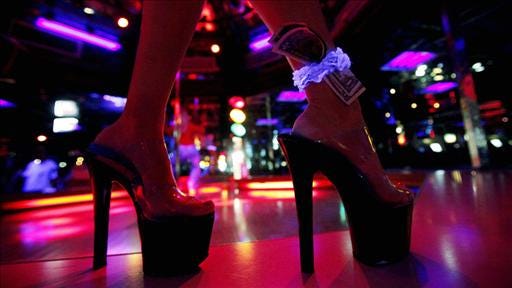Strip clubs, venues where patrons can watch dancers perform erotic or exotic dances, remain legal in many parts of the United States despite ongoing debates about their societal impact and ethical considerations. Understanding the reasons behind their legality requires examining various factors, from legal frameworks to cultural attitudes to get https://spearmintrhinodallas.com/.
Introduction
Strip clubs, commonly known for their provocative entertainment, exist within a legal framework that permits their operation in the United States. The definition of strip clubs encompasses establishments where individuals, typically adults, gather to watch dancers perform erotic or exotic dances, often in exchange for payment. Despite varying regulations across states and municipalities, the legal status of strip clubs raises questions about the intersection of individual freedoms, societal values, and legal standards.
Arguments for Legalization
- Freedom of expression and assembly
Strip clubs are often defended on the grounds of upholding constitutional rights, including freedom of expression and assembly. Proponents argue that individuals should have the autonomy to engage in consensual adult entertainment without undue interference from the government. By legalizing strip clubs, society acknowledges and respects the diverse preferences and lifestyles of its citizens. - Economic contributions
Another rationale for the legality of strip clubs lies in their economic impact. These establishments generate significant revenue through entrance fees, beverage sales, and tipping practices. Additionally, they create employment opportunities for dancers, bartenders, security personnel, and other staff members. From a fiscal perspective, strip clubs contribute to local economies and tax revenues, making them attractive to policymakers and business owners. - Regulation and harm reduction
Legalization enables authorities to implement regulations and oversight measures to mitigate potential harms associated with strip clubs. These regulations may include licensing requirements, age restrictions for patrons and performers, zoning ordinances, and health and safety standards. By operating within a regulated framework, strip clubs can minimize risks such as human trafficking, drug abuse, and violence, thus promoting safer environments for all stakeholders.
Challenges and Criticisms
- Objectification and exploitation
Critics argue that strip clubs perpetuate the objectification and commodification of primarily female bodies, reinforcing harmful gender stereotypes and power dynamics. The commercialization of sexuality within these establishments may contribute to the exploitation of dancers, who may face pressure to perform or tolerate inappropriate behavior from patrons in exchange for financial compensation. - Social implications
The presence of strip clubs in communities can have broader social implications, influencing perceptions of sexuality, relationships, and gender roles. Some contend that frequenting strip clubs normalizes voyeuristic behaviors and fosters a culture of entitlement, where women’s bodies are seen as commodities for male consumption. Additionally, exposure to explicit content in strip clubs may desensitize individuals to issues of consent and respect in intimate interactions. - Legal inconsistencies
The legal landscape surrounding strip clubs is characterized by inconsistencies and ambiguities, with regulations varying significantly from one jurisdiction to another. This lack of uniformity poses challenges for both operators and patrons, leading to confusion about permissible activities and permissible conduct. Moreover, legal loopholes and enforcement disparities may undermine efforts to address illicit activities within strip club environments, such as underage drinking or sexual exploitation.
Cultural Factors and Public Opinion
- Changing attitudes towards sexuality
Evolving societal attitudes towards sexuality and sexual expression influence the ongoing discourse surrounding the legality of strip clubs. As discussions about consent, diversity, and body positivity gain traction, individuals are increasingly scrutinizing the ethical implications of commercialized sexual entertainment. This shift in cultural norms may shape public perceptions of strip clubs and inform future policy decisions. - Gender dynamics and power structures
Strip clubs often serve as microcosms of broader gender dynamics and power structures within society. The predominance of male patrons and female performers reflects entrenched gender inequalities and the objectification of women in public spaces. Conversely, the emergence of LGBTQ+-friendly and male-oriented strip clubs highlights the complexity of gendered experiences and desires in the realm of adult entertainment. - Influence of media and pop culture
Media portrayals of strip clubs in films, television shows, and music videos contribute to the popular imagination surrounding these establishments. While some depictions glamorize the allure and excitement of strip club culture, others critique its darker underbelly, including exploitation and marginalization. The interplay between media representations and public perceptions shapes attitudes towards strip clubs and informs public discourse on their legality and social significance.
Conclusion
The legality of strip clubs in the United States is a multifaceted issue that intersects with constitutional principles, economic interests, social norms, and cultural attitudes. While arguments for legalization emphasize individual freedoms, economic benefits, and regulatory safeguards, criticisms highlight concerns related to objectification, exploitation, and societal harm. As public opinion evolves and societal values evolve, the ongoing debate surrounding strip clubs underscores the need for nuanced discourse, thoughtful regulation, and a recognition of the complex intersections between individual rights and collective well-being. As such, the conversation surrounding the legality of strip clubs remains an ongoing and evolving dialogue that reflects broader shifts in cultural attitudes and legal standards.





